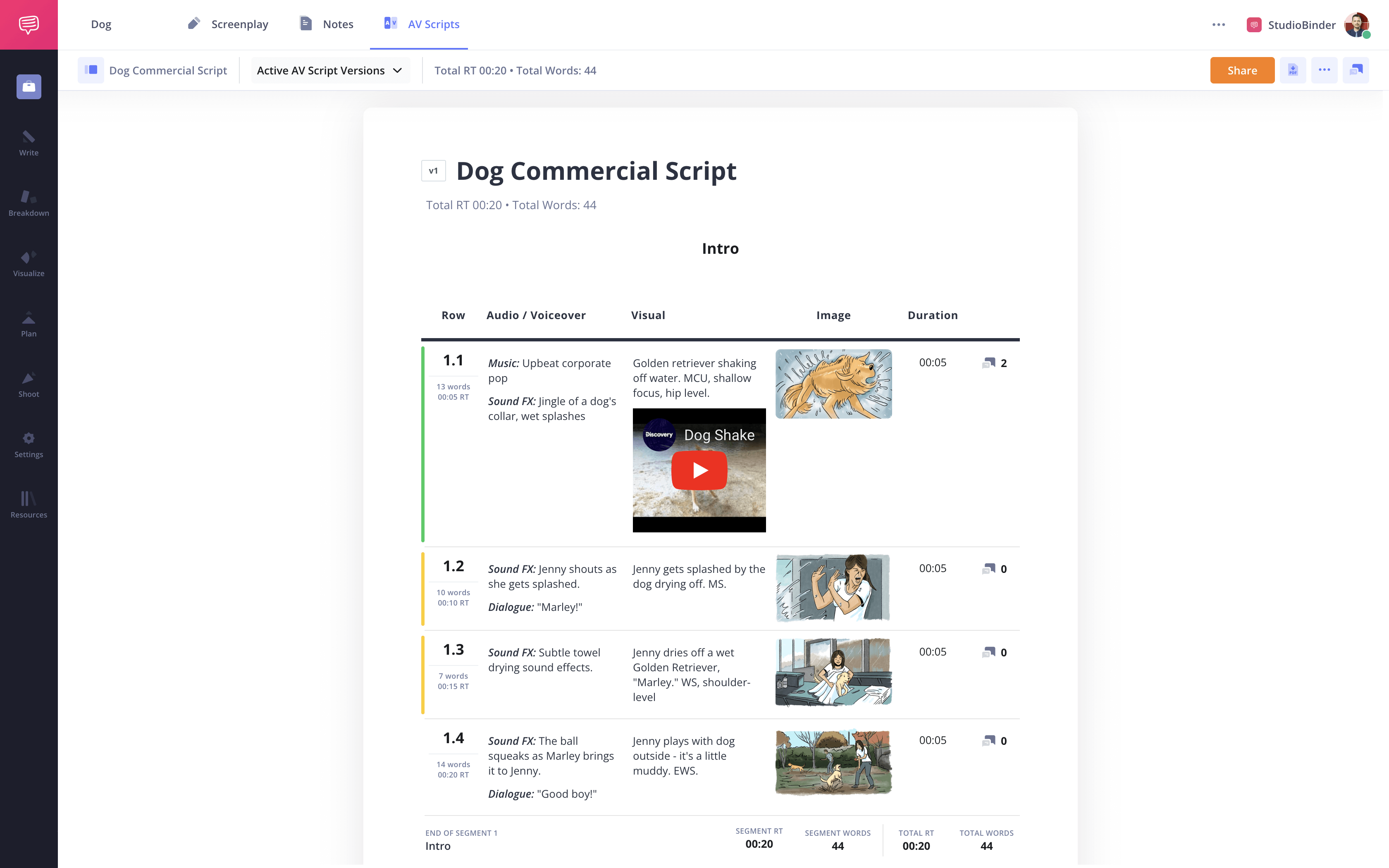Writing an Audio/Visual (AV) script template can be a nerve-racking undertaking. Your message may be simple, but getting it down to one-minute timing can be an intimidating thing. But as with any creative endeavor, you just need to lock down your structure. This is what a trusty AV script template (or audio visual template) does: it arranges the sights and sounds of your idea into a linear flow.
We’ll go end-to-end on how to write an AV script. And you’ll find a free AV script template below to capture your idea right away.
2 Column script guide
What is an AV script?
Before we get into how to create one, let’s make sure we understand what we want our final audio-visual script to look like. AV scripts require attention to detail and adherence to a formatting structure.
For our step-by-step walkthrough, we’ll use StudioBinder’s AV script creator to see what the process looks like. But remember, this undertaking isn’t specific to the StudioBinder software; these are steps you’ll take regardless of what platform you’re using (or not using).
So, without further ado, this is what a finished AV script should look like.
How to write an AV script
Now, let’s look at how to get here.
Starting an A/V script template
1. Establish goals and structure
First, you need to know what you’re using your AV script template for. AV script templates have a variety of uses, from commercials, radio spots, music videos, video essays, documentaries, corporate videos, PowerPoint presentations, and much more.
Once you decide on what your medium is, you’ll have a clearer idea of how to structure your script.
In StudioBinder, you can create segments and banners to fine-tune your structure. These can organize your script with an intro, outro, or whatever other sections you think you’ll need. This is just a starting point– you can add or remove these elements as you go.
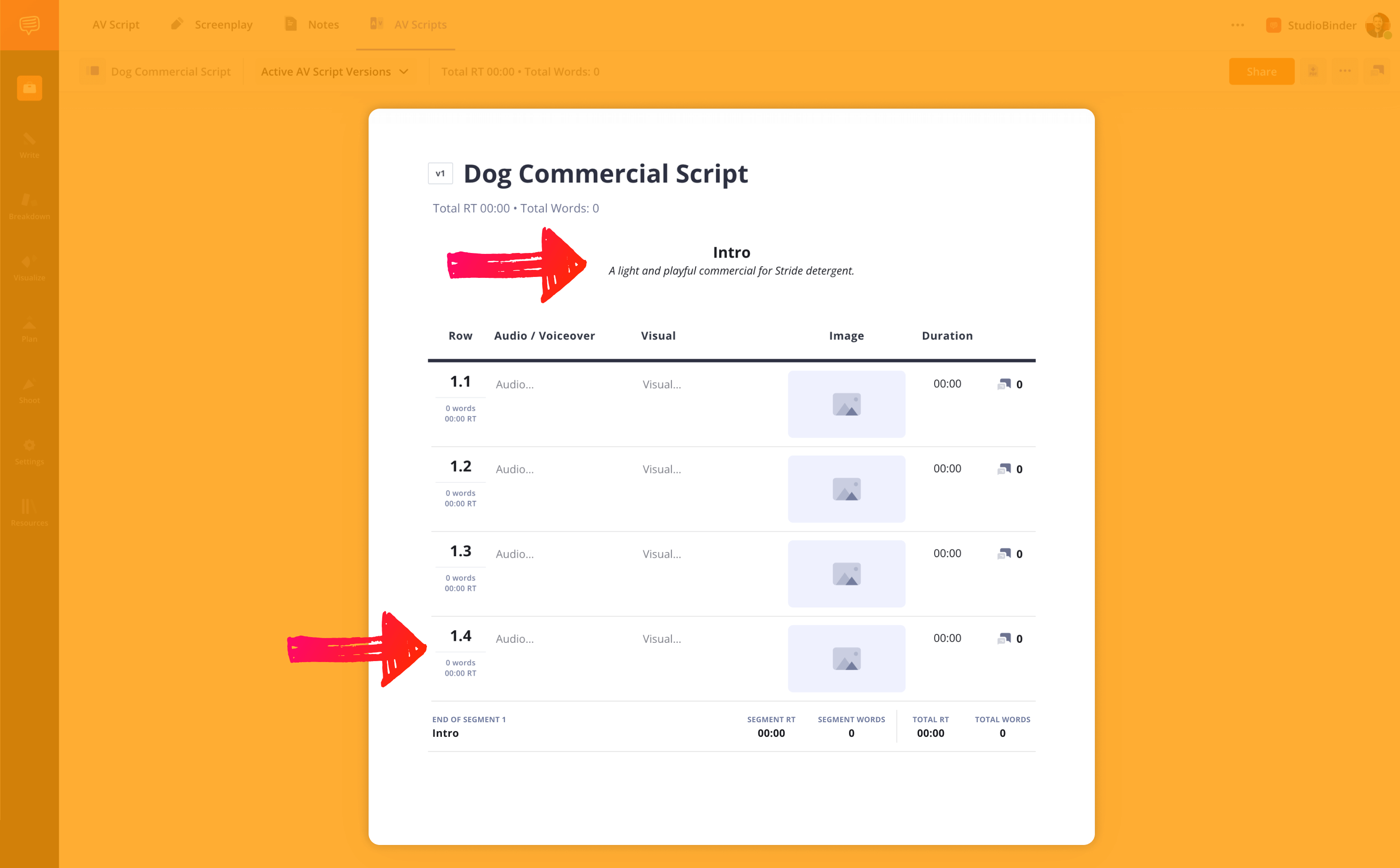
How to write an AV script template
Related Posts
How to write an AV script’s voiceover
2. Write audio/voiceover
Now it’s time to start writing your script. AV script templates use two columns, which is why they’re also referred to as two column scripts. The left side contains the audio (what you’re planning on saying) and the right side lays out the visuals.
The nature of your script will affect what you’re writing on the left side. If it’s a music video, it may be lyrics. If it’s a radio play, it will be dialogue.
StudioBinder allows you to write descriptions in different styles to make different elements stand out. You can also add hyperlinks to pronunciation guides, audio snippets, and more.
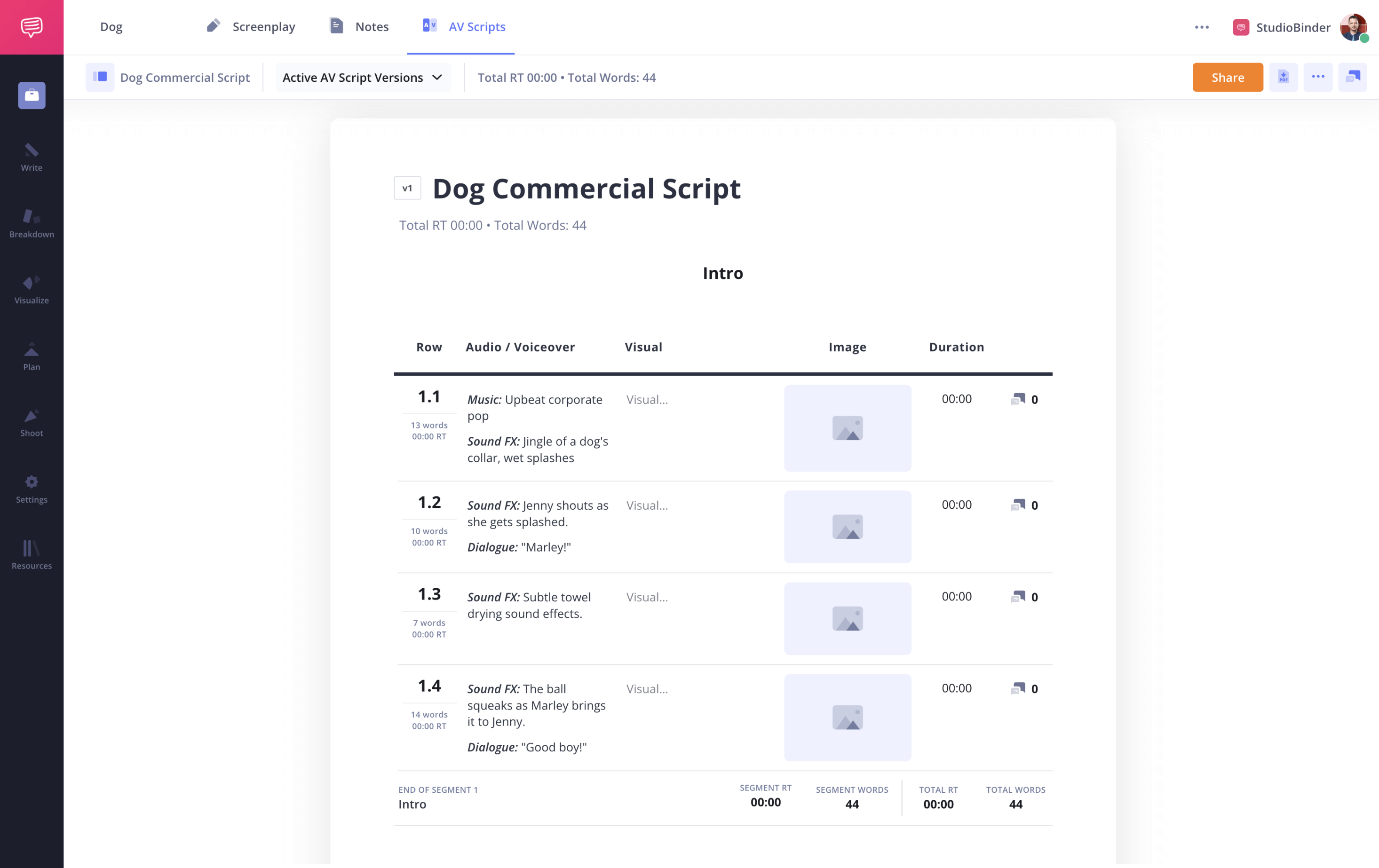
StudioBinder audio visual script
How to write an AV script’s visuals
3. Plan your shots
After your left column is filled out, turn your attention to the right. In the video column, you’ll describe the imagery you want paired with specific lines.
Don’t be afraid to get into the specifics, like shot size, camera angle, and more.
In StudioBinder, you can add links in this column if you don’t want to embed them in the audio section. You can also include actual images of storyboards, floorplans, and more.
You can even go a step further in a third image column, where you can include visuals for each line. These images can be imported, pulled from other projects, or taken via webcam.
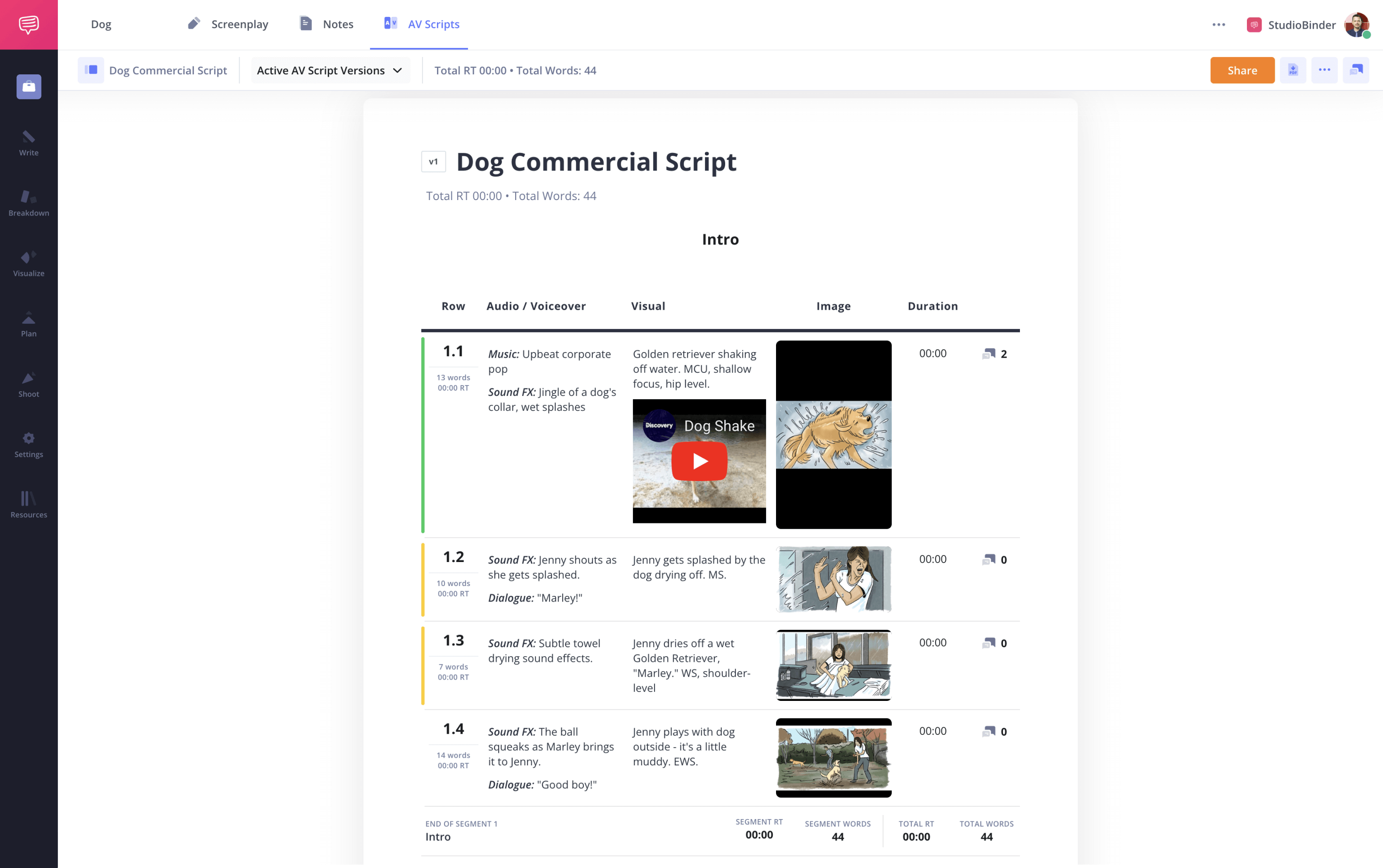
AV script template with images
Related Posts
Audio visual script template timing
4. Time your script
AV scripts are all about timing. They allow you to plan out just how long each line and section will take to get through. One way to do this is to read the script aloud and time yourself. This will give you a rough idea of how long your project will run.
StudioBinder’s AV script template software will automatically count the words in each of your lines, segments, and entire scripts. You can also add specific durations to each line or use the software’s built-in timer for an even more exact timing.
These individual times will be compiled for you and totalled at the bottom of the script, so that you will know your total runtime as you go.
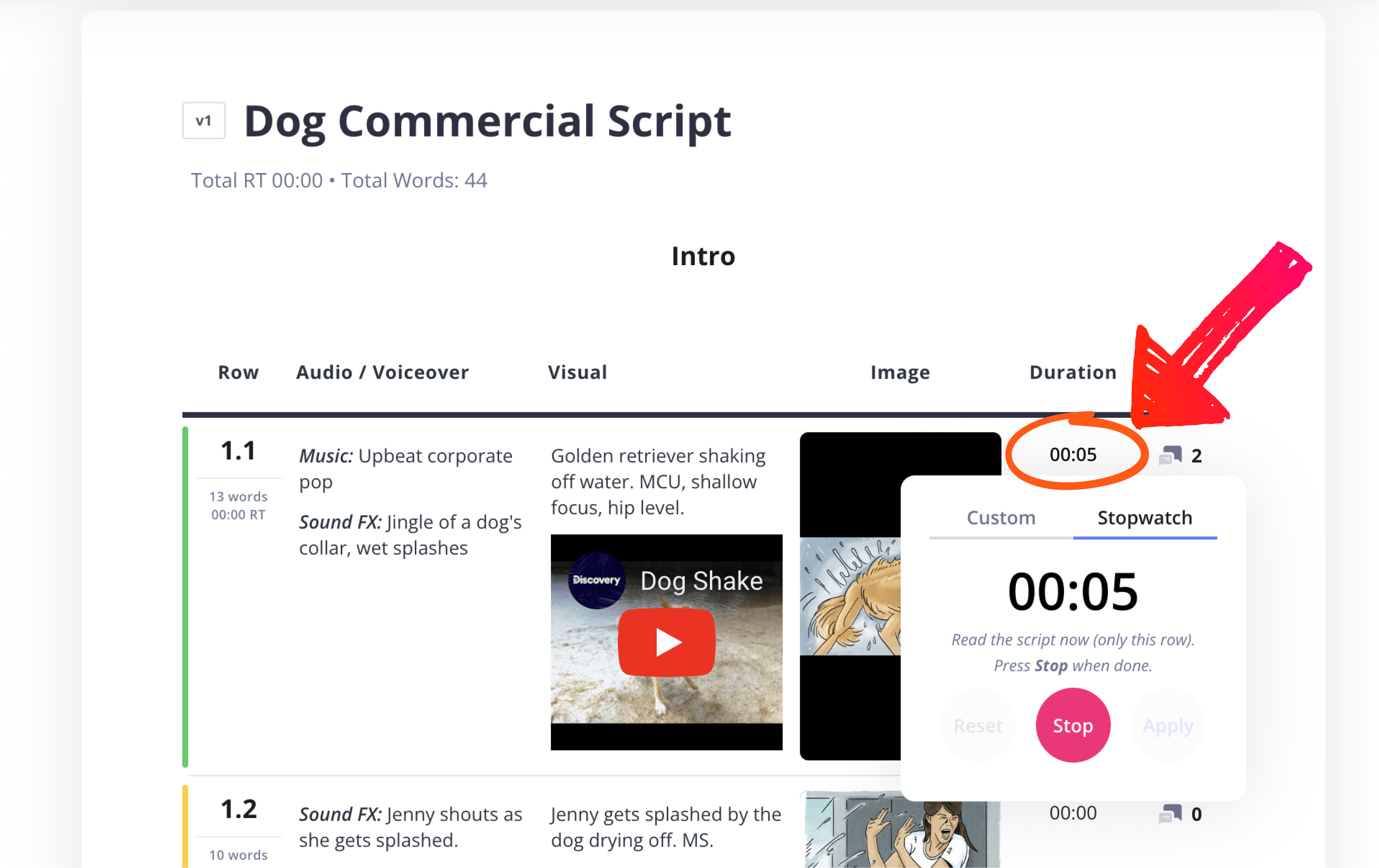
Two column script template’s timer
Sharing your A/V script
5. Get feedback
Writing an AV script is a collaborative process. When you’ve completed your draft, make sure you get feedback from the other creatives working on your project. If you’re working with a client, you’ll want their thoughts as well.
StudioBinder allows you to share your script with just a couple clicks using a “view-only” link. You can also add collaborators on the project so that they can add comments, eliminating email back and forths. Comments are specific to lines, so if a line’s moved, the comment will come with it. Once the comment has been addressed, you can mark it as resolved.
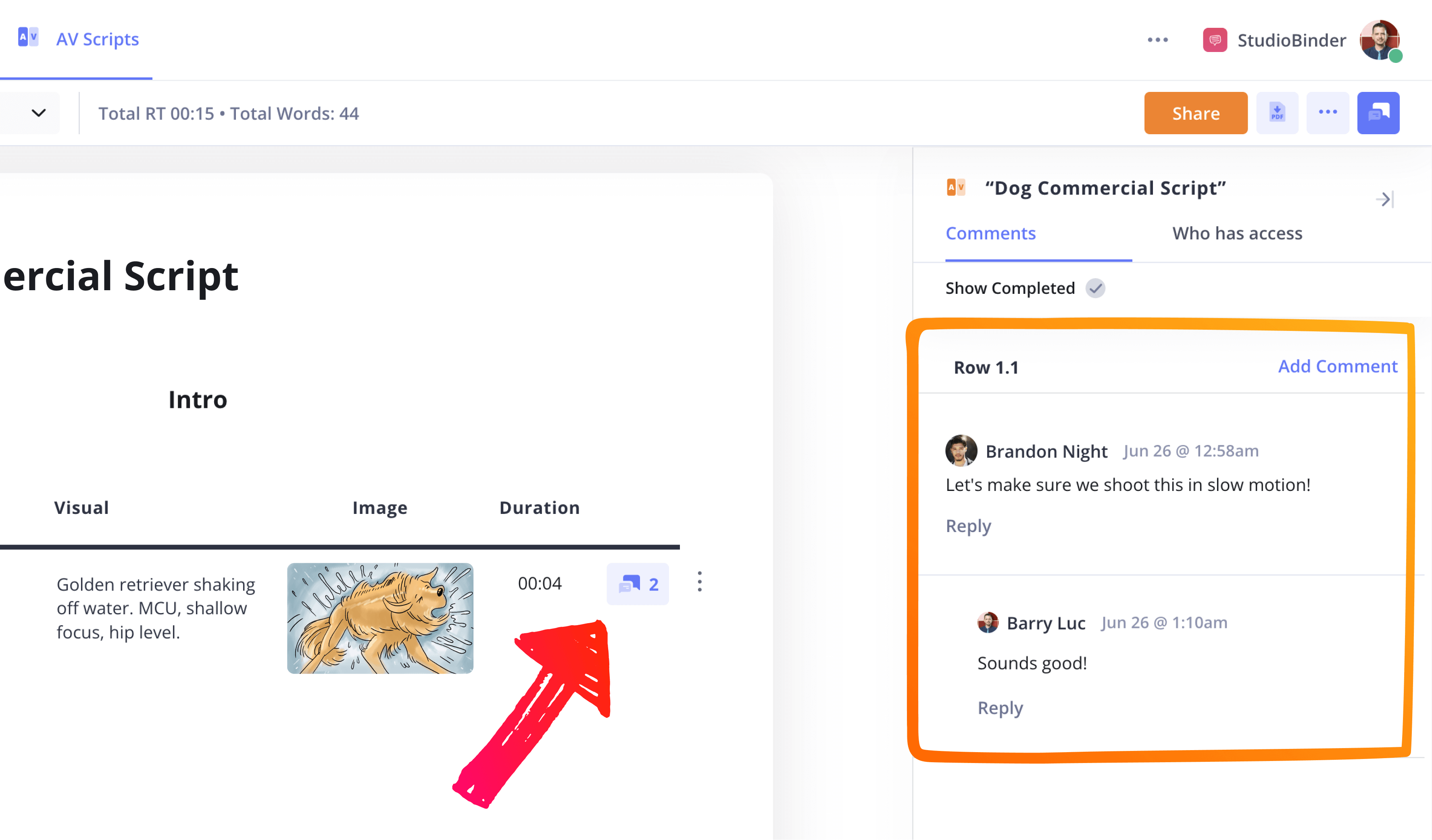
How to write an AV script with collaborators
Alternatively, you can mark each row with a status color (what these colors are and mean are up to you). Along with the comments, you’re collaborative process will be efficient and allow you to focus on the meat of the script, not the logistics of the template.
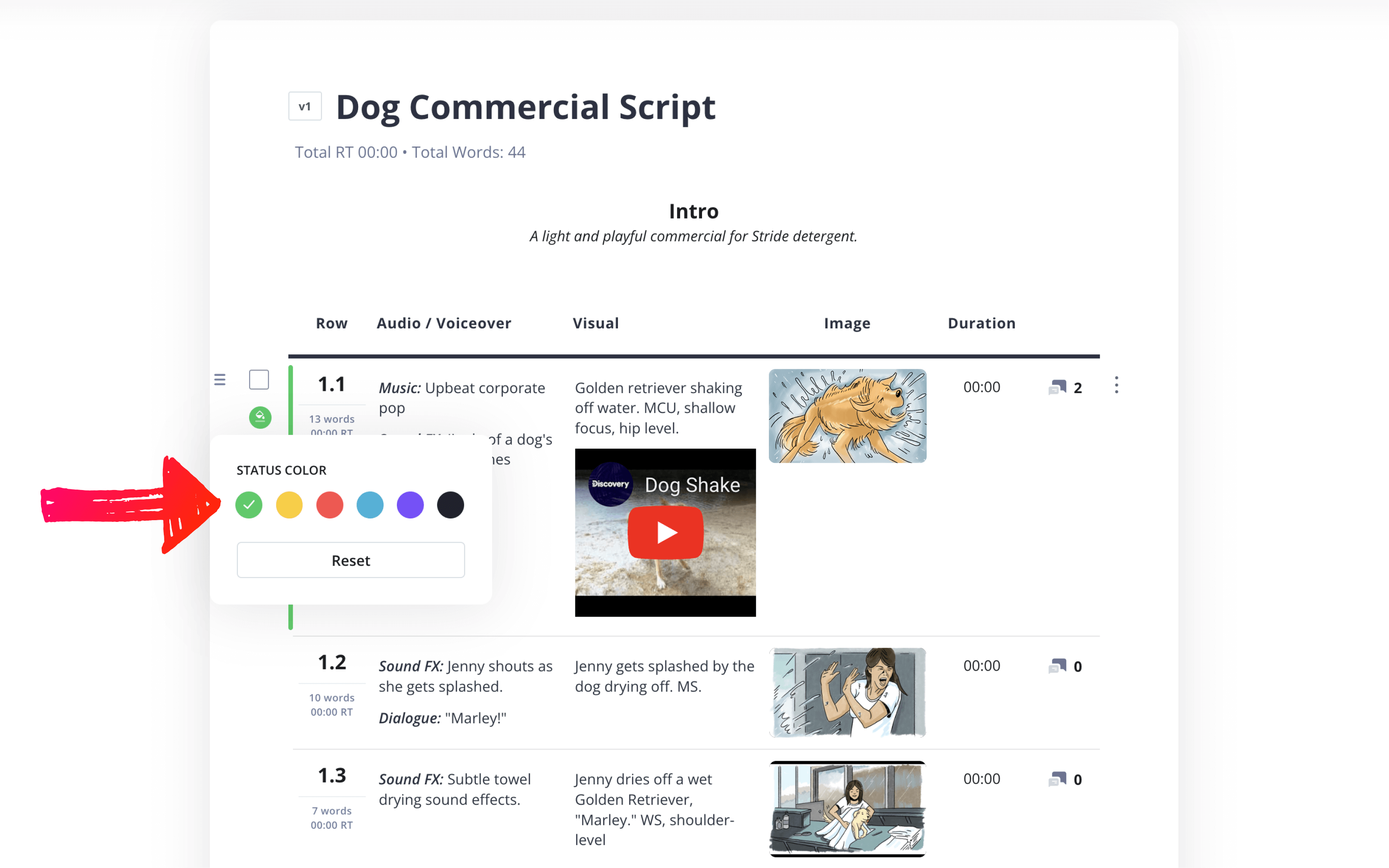
Assign status color to each row
Up Next
How to make a Commercial by Mastering Persuasive Ads in 5 Steps
As you solidify your AV script template, drive toward what your viewer is taking away. Whether it’s information or a specific product, build to a call-to-action they can’t refuse.
And remember what radio personality Ira Glass said: “your taste is why your work disappoints you.” Don’t get discouraged if your video script template doesn’t take shape immediately. Patiently whittle that bad boy down until you achieve your vision.
To dive deeper into writing good commercials, check out how to incorporate persuasive techniques.
And be sure to let us know which guidelines you like to use when writing commercials in the comments below!

